Dark Forest (2006)
9th January 2010
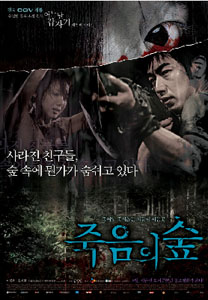 Originally posted July 23, 2007–Yesterday I watched the Korean zombie movie Dark Forest. I had received it about a month ago when I purchased the horror collection, One Day Suddenly. I remember having seen it once before on tv…come to think of it, I saw it the on tv the same summer it was released–that should have told me something. I also realized after watching it, that I had seen the edited version on television not long before.
Originally posted July 23, 2007–Yesterday I watched the Korean zombie movie Dark Forest. I had received it about a month ago when I purchased the horror collection, One Day Suddenly. I remember having seen it once before on tv…come to think of it, I saw it the on tv the same summer it was released–that should have told me something. I also realized after watching it, that I had seen the edited version on television not long before.
The movie is unfortunately the weekest of the collection which makes it especially disappointing as zombie films are so rare in Korean cinema. My biggest problem with the film was not the low budget or even the oddly convuluted story (Psychic visions? Why?). The biggest problem I had was the blatent misogyny on display. Many slasher movies suffer from the same discrepancy in how they deal with their male and female characters. The males often encounter a quick death and frequently the actual event occurs offscreen. Women, on the other hand, often endure long horrifying deaths for the pleasure of …ummm..who exactly? Certainly not the audience. Dark Forest takes this situation to a new and even more disturbing level when one of the characters is raped with a knife held by a zombie. Why this unnecessary cruelty? In a slasher movie, someone could make a weak arguement about the sexual deviance of the killer–but this film is about zombies!
Most of the action that occurs in Dark Forest was completely forgettable but one thing made me think about the movie long after the credits rolled—the message written in the matchbook. One character claims to be trying to quit smoking. His girlfriend writes a note behind the matches that he won’t be able to see until the matches have been all used. The subtitles claim this message reads “Why don’t you quit?” but that is not what it says. It actually reads “You bad man” followed by the symbols for tears used in text messaging and internet chatting. Given that he discovers the note when he is about to burn a character to death to prevent them from turning into a zombie, wouldn’t the literal translation have been more poignant and fitting?

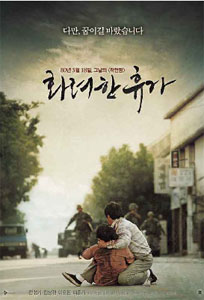 Originally posted July 27, 2007–Last night I watched Director Kim Ji-joon’s latest film, May 18, which opened in theaters across the country this week. The story of the film is the Kwangju Massacre of 1980 in which the government sent in the armed forces to deal with protests against Jeon Doo-hwan’s coup on December 12, 1979. The army and the nation at large were told that the incident was a communist uprising and that story persisted for more than a decade after the event. After democracy was restored in the mid 90’s, the goverment apologized for the incident. The citizens of Kwangju who died in that week of fighting and seige are now considered heroes of democracy–although the exact number who lost their lives remains uncertain. More information about the incident can be read here:
Originally posted July 27, 2007–Last night I watched Director Kim Ji-joon’s latest film, May 18, which opened in theaters across the country this week. The story of the film is the Kwangju Massacre of 1980 in which the government sent in the armed forces to deal with protests against Jeon Doo-hwan’s coup on December 12, 1979. The army and the nation at large were told that the incident was a communist uprising and that story persisted for more than a decade after the event. After democracy was restored in the mid 90’s, the goverment apologized for the incident. The citizens of Kwangju who died in that week of fighting and seige are now considered heroes of democracy–although the exact number who lost their lives remains uncertain. More information about the incident can be read here: 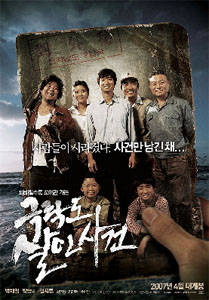 prominent releases so far in 2007–Secret Sunshine made news when Jeon Do-yeon took home the prize of Best Actress from Cannes. Both D-War and May 18 have been making news for their box office tallies and even Black House peaked interests due to its source material. But there have been dozens of new releases that slip under the radar but some of them deserve wider recognition. Paradise Murdered is one of those.
prominent releases so far in 2007–Secret Sunshine made news when Jeon Do-yeon took home the prize of Best Actress from Cannes. Both D-War and May 18 have been making news for their box office tallies and even Black House peaked interests due to its source material. But there have been dozens of new releases that slip under the radar but some of them deserve wider recognition. Paradise Murdered is one of those.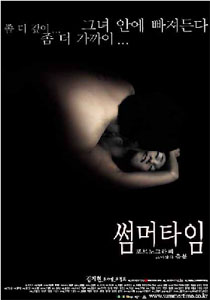 Originally posted September 6, 2007–Yesterday, I received my monthly order of dvds which included many interesting titles. It also included Summertime. I had a vague memory about not liking this movie but I couldn’t remember too much about it so I decided to pop the disk into the dvd player to refresh my memory. It all came back to me–I don’t like this movie anf for more than one reason.
Originally posted September 6, 2007–Yesterday, I received my monthly order of dvds which included many interesting titles. It also included Summertime. I had a vague memory about not liking this movie but I couldn’t remember too much about it so I decided to pop the disk into the dvd player to refresh my memory. It all came back to me–I don’t like this movie anf for more than one reason.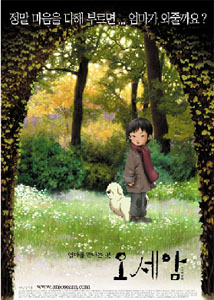 Originally posted September 10, 2007–When people talk about their favorite Korean animations, I am always surprised how rare it is to hear Oseam mentioned. If you ask someone what they feel is the best Korean-made animated film of the last decade, many will answer with Wonderful Days and a few will say My Beautiful Girl, Mari. To be honest, I didn’t care for Wonderful Days at all–it seemed like a run-of-the-mill anime to me. And I don’t think I ever finished watching my dvd of My Beautiful Girl, Mari and if I did, I don’t remember it which is not a good sign.
Originally posted September 10, 2007–When people talk about their favorite Korean animations, I am always surprised how rare it is to hear Oseam mentioned. If you ask someone what they feel is the best Korean-made animated film of the last decade, many will answer with Wonderful Days and a few will say My Beautiful Girl, Mari. To be honest, I didn’t care for Wonderful Days at all–it seemed like a run-of-the-mill anime to me. And I don’t think I ever finished watching my dvd of My Beautiful Girl, Mari and if I did, I don’t remember it which is not a good sign. 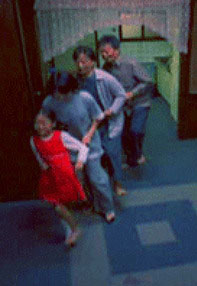 Originally posted September 27, 2007–It is a sad fact that there are simply not enough ways to view short films. Scores of films are made each year but unless you are able to attend every film festival out there, then you probably will not see many of these. And someone who just watches their films in a multiplex will probably never see these films at all. That is a tragedy because some of the best films to come around each year are not feature length films made by famous directors with bundles of money, but small films made on shoestring budget that probably run less than an hour long. Today something jogged my memory and I recalled the film Home Sweet Home directed by Uhm Hye-jeong that I saw back in 2004. Although I have not seen the film since then, the story and feelings I made such an impression that I am still able to remember the entire film and can say with confidence that it is one of my favorites.
Originally posted September 27, 2007–It is a sad fact that there are simply not enough ways to view short films. Scores of films are made each year but unless you are able to attend every film festival out there, then you probably will not see many of these. And someone who just watches their films in a multiplex will probably never see these films at all. That is a tragedy because some of the best films to come around each year are not feature length films made by famous directors with bundles of money, but small films made on shoestring budget that probably run less than an hour long. Today something jogged my memory and I recalled the film Home Sweet Home directed by Uhm Hye-jeong that I saw back in 2004. Although I have not seen the film since then, the story and feelings I made such an impression that I am still able to remember the entire film and can say with confidence that it is one of my favorites.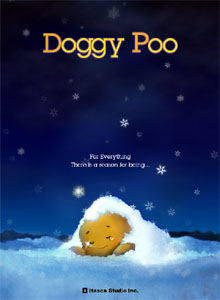 last night– I swear that Hana tv has everything– It has hard to find things like Song Il-gon’s The Magicians and Kim Jin-seong’s Geochilmaru. So if there are so many great options, why am I taking the time to write about a short animation about ..for lack of a better word..a turd. Well, get all thoughts of South Park (I really hate that show) our of your head. Doggy Poo is as far removed from Mr. Hankey as possible. This beautifully realized claymation is more inspirational. It feels like a story that might have been told by Saint-Exupery’s Little Prince and never delves into any kind of ’toilet humor’ which the main character might lead one to expect. As the poster on the right states, it is a story of self- discovery for little poo as he tries to find a reason for his existance. Although he is ignored by larger life forms and terrorized and instulted by various kinds of birds, Poo finds comfort, and later answers, from various inanimate objects like Clump of Dirt, Fallen Leaf and Dandelion. Although all of these things, including Poo, are unable to move on their own, the characters are not dull and their expressions more than make up for their lack of movement.
last night– I swear that Hana tv has everything– It has hard to find things like Song Il-gon’s The Magicians and Kim Jin-seong’s Geochilmaru. So if there are so many great options, why am I taking the time to write about a short animation about ..for lack of a better word..a turd. Well, get all thoughts of South Park (I really hate that show) our of your head. Doggy Poo is as far removed from Mr. Hankey as possible. This beautifully realized claymation is more inspirational. It feels like a story that might have been told by Saint-Exupery’s Little Prince and never delves into any kind of ’toilet humor’ which the main character might lead one to expect. As the poster on the right states, it is a story of self- discovery for little poo as he tries to find a reason for his existance. Although he is ignored by larger life forms and terrorized and instulted by various kinds of birds, Poo finds comfort, and later answers, from various inanimate objects like Clump of Dirt, Fallen Leaf and Dandelion. Although all of these things, including Poo, are unable to move on their own, the characters are not dull and their expressions more than make up for their lack of movement.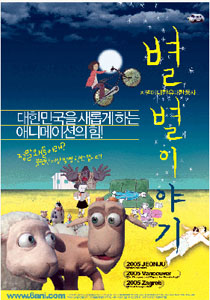 Originally posted February 6, 2008–The If You Were Me series which has been produced by the National Human Rights Commision now consists of four sets of films. The first was produced in 2003 and featured top directors Park Chan-wook, Im Soon-rye and Park Kwang-su. The second set, produced in 2005, included shorts by directors Ryu Seung-wan and Jang Jin among its number and the most recent collection had works by the indie directors No Dong-seok, Hong Ki-seon and the Kim Brothers. However, the animated installment of If You Were Me took a different stance. Only one director is readily recognizable–Lee Seong-kang who made My Beautiful Girl Mari, Texture of Skin and Yobi the Five-Tailed Fox. The stories, as one might suspect, feature much of the same themes that have already been covered in the earlier films. But in the format of animation, the directors are free to have their characters undergo impossible situations as well as making it visually appealing to viewers of all ages.
Originally posted February 6, 2008–The If You Were Me series which has been produced by the National Human Rights Commision now consists of four sets of films. The first was produced in 2003 and featured top directors Park Chan-wook, Im Soon-rye and Park Kwang-su. The second set, produced in 2005, included shorts by directors Ryu Seung-wan and Jang Jin among its number and the most recent collection had works by the indie directors No Dong-seok, Hong Ki-seon and the Kim Brothers. However, the animated installment of If You Were Me took a different stance. Only one director is readily recognizable–Lee Seong-kang who made My Beautiful Girl Mari, Texture of Skin and Yobi the Five-Tailed Fox. The stories, as one might suspect, feature much of the same themes that have already been covered in the earlier films. But in the format of animation, the directors are free to have their characters undergo impossible situations as well as making it visually appealing to viewers of all ages. 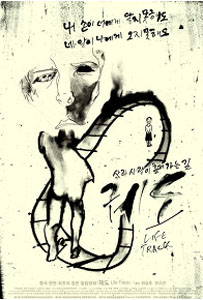 Originally posted July 25, 2009–Usually, I like to give low-budget, independent films a chance. I often enjoy slow-moving, introsective films and I do not require a lot of dialog to understand the story. However, that being said, there is slow-moving and then there is stagnant. Life Track by director Kim Kwang-ho unfortunately falls into the latter category. How slow is it? I fell asleep three times while watching it. I would wake up, go back to where I had dozed off to see what I had missed, and each time discovered that I had missed absolutely nothing. It wasn’t the fact that there was little to no dialogue. Words are not needed if the actors can convey the story through their expressions or body language. Hell, I’m even happy if there is nice cinemotgraphy and little else to look at and I find old silent movies very enjoyable. However, the camerawork and scenery in this film are not that much to look at, the actors, with the exception of Jang So-yeon, are not up to the task of telling a story through their expressions and there is no spoken story to fill the viewer in on the thoughts of the characters– the first sentence spoken in the film comes at the 20 minute mark and during the entire film there are only about ten lines. In brief, I thoroughly disliked this film.
Originally posted July 25, 2009–Usually, I like to give low-budget, independent films a chance. I often enjoy slow-moving, introsective films and I do not require a lot of dialog to understand the story. However, that being said, there is slow-moving and then there is stagnant. Life Track by director Kim Kwang-ho unfortunately falls into the latter category. How slow is it? I fell asleep three times while watching it. I would wake up, go back to where I had dozed off to see what I had missed, and each time discovered that I had missed absolutely nothing. It wasn’t the fact that there was little to no dialogue. Words are not needed if the actors can convey the story through their expressions or body language. Hell, I’m even happy if there is nice cinemotgraphy and little else to look at and I find old silent movies very enjoyable. However, the camerawork and scenery in this film are not that much to look at, the actors, with the exception of Jang So-yeon, are not up to the task of telling a story through their expressions and there is no spoken story to fill the viewer in on the thoughts of the characters– the first sentence spoken in the film comes at the 20 minute mark and during the entire film there are only about ten lines. In brief, I thoroughly disliked this film.